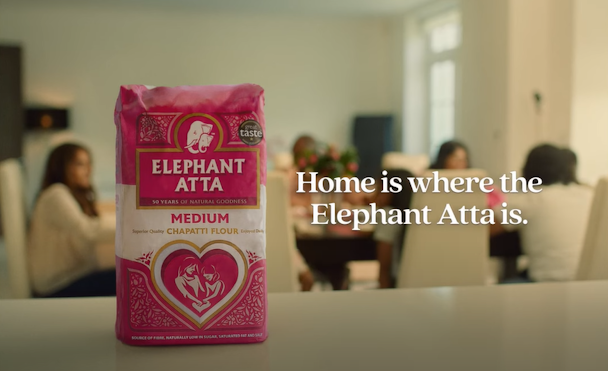Brands could learn a lot about South Asian representation from this flour ad
Sadia Siddiqui, founder of D&I consultancy Language Matters, recently saw a UK ad that got South Asian representation right. She shares tips for brands looking to do the same.

South Asians make up the second largest ethnic group in the UK, yet we’re notably absent from the British advertising landscape. I’d put this down to two broad factors. First up, it’s a simple - but significant - oversight. With South Asians making up 8% of the advertising industry, we’re just not on the radars of the teams doing the work.
Secondly, I sense that advertisers have a degree of trepidation about depicting the varied ethnicities that come under the banner of South Asians. As we saw earlier this year with Tesco’s Eid spot, we may be often overlooked, but we’re super vocal if we believe we’ve been misrepresented.
Tesco’s work was important and well-intentioned, but it fell short on several counts. No one’s asking for docu-ads, but if cultural customs are depicted, they need to be presented authentically.
Authenticity has become an increasingly overused term in our industry - but there’s a truth in this.
If we want people to see themselves or indeed an idealized version of themselves in our work, authenticity is what we need to strive for, and that’s where Krow’s spot, ‘Home is where the Elephant Atta is,’ struck gold (for me).
There is no one singular British-South Asian experience
One of the difficulties in accurately representing British South Asians is that we’re a diverse demographic, so it’s very easy to fall foul of stereotypes and tropes in the quest for better representation.
A few years ago, we could put a woman in a hijab and consider our job done. Still, I believe the racial reckoning following the murder of George Floyd and the repercussions that it sent around the world means audiences demand more from the content they consume. And they are not backward in coming forward to share those views.
Advertisement
Krow neatly side-stepped this issue by featuring a montage of ‘real’ families. It enabled them to show a snapshot of the diversity that exists in our communities. Non-South Asian viewers may see various families happily ensconced in their kitchens. But we, the audience of the ad, can differentiate between the Hindu, Muslim and Sikh families preparing their meals and, most importantly, the commonalities we share. Irrespective of who we pray to, we all want perfectly round rotis.
The modern British South-Asian experience is THE modern British experience.
Ethnicity aside, many of us grew up with our mothers doing the majority of the cooking while the male members of the family waited to be served. What’s been particularly well-received in the South-Asian community is that the ad depicts everyone pitching in, both boys and girls, undergoing the rite of passage of learning how to make that perfect round roti.
Advertisement
It might be an idealized picture, but it’s the reality we all, particularly Asian women, want to see in our traditionally patriarchal communities.
Unapologetically South Asian
The ad is keenly observed: the Sikh gentleman wrapping his turban, the roti flipped on the open gas flame. Families happily and openly ate with their hands and decanted the flour into the ‘atta-bin.’
These are lovely glimpses into our blended lives - our Britishness and our unashamed Asianness.
The main gripe I had with the Tesco ad was the pronunciation of the child’s name. The ad had the difficult task of balancing nuance with mass appeal, but in this particular case, it came off as inauthentic and crass.
When it comes to accents, most second and third-generation South Asians will cringe when they hear someone (even one of our own) mimicking an Asian accent because, for way too long, our grandparents and parents’ accents have been viewed as comical and intrinsically funny. This is why I loved the narration of this ad by the South Asian musician Raxstar. He and the Krow team knew how important it was for the words - chapatti, roti, paratha, puri and atta - to be pronounced properly and with an exaggerated South Asian accent. It was bold, beautiful, and unapologetic.
We should all strive to make culturally intelligent work, and Krow’s spot has set the industry a lovely new benchmark.
Sadia Siddiqui is a freelance client service director and the founder of Language Matters, a D&I consultancy that helps organizations foster a more inclusive environment starting with their language.

